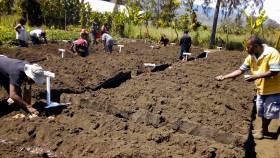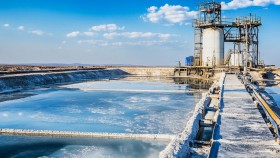Months after the fires, parts of Namadgi aren't bouncing back. Here's why
Across the Namadgi, green shoots of hope have sprouted after the devastation of last summer's fires.
But there are some areas which are just as desolate as they were after fires swept through.
Australian National University ecologist Dr Ben Scheele visited the eastern part of the park this week, which was one of the areas hardest hit by the Orroral Valley fire due to its hilly terrain and the dry conditions.
There's been little change in the area since April, even though other areas of the park are bouncing back.
"Anecdotally, you can see the vegetation is recovering much quicker in areas that were burnt less severely," Dr Scheele said.
Australian National University senior lecturer Dr Marta Yebra flew over Namadgi to assess the damage in the aftermath of the fires.
She found 45 per cent of the burnt areas were impacted at a high severity, which could explain the lack of regeneration.
"Research has shown less regeneration or resprouting in areas that have been repeatedly burned," Dr Yebra said.











